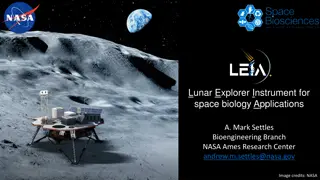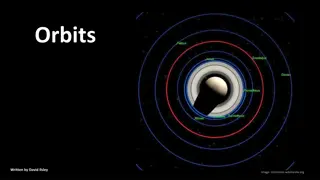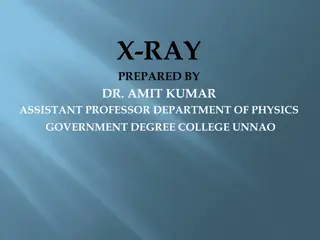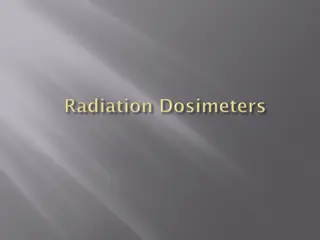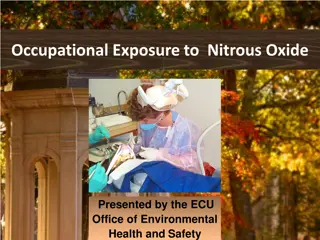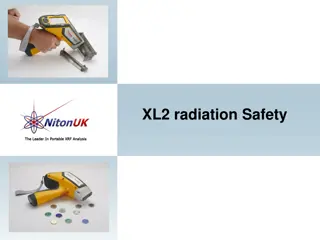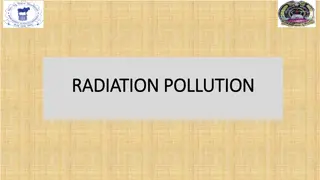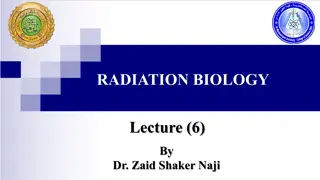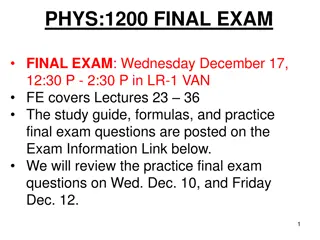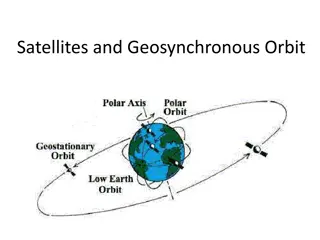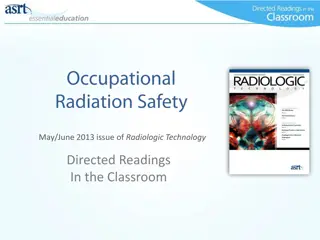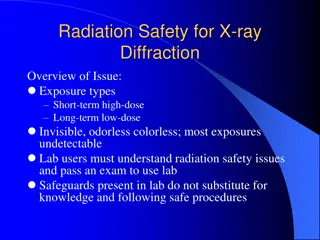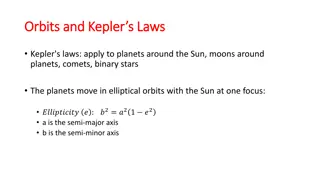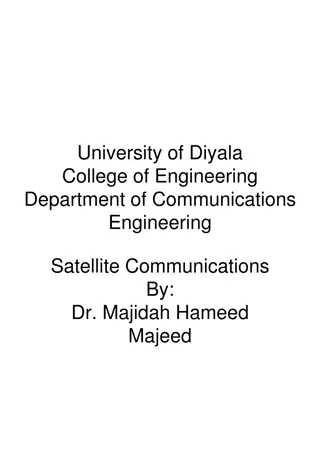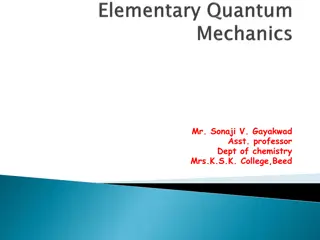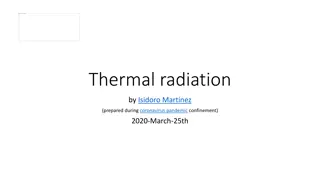Space Radiation Exposure on Electronic Equipment in Various Orbits
Discover the impact of solar particle events on space radiation exposure for electronic equipment at different orbits through multispacecraft observations. Explore the absorbed doses, effects on onboard sensors, and implications for spacecraft operations. Gain insights into the influence of space radiation environment on electronic components and the findings from various spacecraft missions.
Download Presentation

Please find below an Image/Link to download the presentation.
The content on the website is provided AS IS for your information and personal use only. It may not be sold, licensed, or shared on other websites without obtaining consent from the author.If you encounter any issues during the download, it is possible that the publisher has removed the file from their server.
You are allowed to download the files provided on this website for personal or commercial use, subject to the condition that they are used lawfully. All files are the property of their respective owners.
The content on the website is provided AS IS for your information and personal use only. It may not be sold, licensed, or shared on other websites without obtaining consent from the author.
E N D
Presentation Transcript
Multispacecraft observation of solar particle events contribution in the space radiation exposure on electronic equipment at different orbits
2 Content Introduction List of spacecrafts and onboard sensors parameters SPE spectra in GSO, polar, MEO and LEO (experiment and calculation) Absorbed doses in MEO and LEO (experiment and calculation) SER in GSO, polar, MEO and LEO (calculation) Conclusions
3 Influence of space radiation environment, include SCR, on electronic component Space radiation environment is the main exposure factor which determines the active shelf life of spacecrafts: faults and failures due to space radiation exposure were observed in ~60% space missions* Dose effects Trapped electrons (only near-Earth missions) Trapped protons (only near-Earth missions) Solar protons GCR (only for interplanetary missions) Single event effects Trapped protons Solar protons and ions Protons and ions of GCR *Committee on the Societal and Economic Impacts of Severe Space Weather events: A Workshop Report, 2008
4 List of spacecrafts and onboard sensors parameters GOES (GSO)* Protons: >1, >10, >100 MeV Electro-L (GSO) Protons: 13.7-23, 23-42, 42-112 MeV Spacecrafts in MEO Absorbed dose measurements Meteor-M (polar) Protons and electrons: >15 and >0.7 MeV, >25 and >1.5 MeV, >600 and >6 MeV ISS (LEO) Absorbed dose measurements *http://www.ngdc.noaa.gov/stp/satellite/goes/dataaccess.html
5 SPE spectra in GSO according GOES and Electro-L measurements. Event 1 23.01.2012-26.01.2012
6 SPE spectra in GSO according GOES and Electro-L measurements. Event 2 27.01.2012-01.02.2012
7 SPE spectra in GSO according GOES and Electro-L measurements. Event 3 05.03.2012-16.03.2012
8 Determination of SPE spectra in polar orbit Meteor-M data SEP contribution in polar regions mainly (in the maximum L) 23.01.2012
9 SPE spectra determination results for polar orbit. Events 1-3 1) 23.01.2012-26.01.2012 2) 27.01.2012-01.02.2012 3) 05.03.2012-16.03.2012
10 Calculation of SPE spectra in MEO and LEO Inputs: SPE spectrum in GSO Consideration of geomagnetic cutoff rigidity For average annual Kp (2-3) More careful Rg consideration leads to shifting of low-energetic part of SPE spectrum (future work) FMEO(E)=FGSO*coefficient
11 SPE spectra calculation results for MEO. Events 1-3 1) 23.01.2012-26.01.2012 2) 27.01.2012-01.02.2012 3) 05.03.2012-16.03.2012
12 SPE spectra calculation results for LEO. Events 1-3 1) 23.01.2012-26.01.2012 2) 27.01.2012-01.02.2012 3) 05.03.2012-16.03.2012
13 Calculation of absorbed doses in MEO and LEO Inputs: SPE spectrum in the given orbit Shielding geometry Calculation using OMERE software* *http://www.trad.fr/OMERE-Software.html Benghin V.V et al. Scientific Session MEPhI-2015
14 Absorbed dose. Experimental and calculation results. MEO * Total value (electron+protons) ** SPE dose Event Experimental*, a.u./day 8.5 Calculation**, a.u./day 3.9 23.01.2012- 26.01.2012 27.01.2012- 01.02.2012 05.03.2012- 16.03.2012 8.7 1.5 Annual dose: 143 a.u./day Max dose: 1900 a.u/day 90 3.6 Discrepancy can be concerned with: Electrons exposure influence on experimental absorbed dose value Gap in data
15 Absorbed dose. Experimental and calculation results. LEO * Differential of total values during events and a week before ** SPE dose Event Experimental*, a.u./day 143 Calculation**, a.u./day 1840 769 (> 100 MeV) 269 56 (> 100 MeV) 125 117 (> 100 MeV) 23.01.2012- 26.01.2012 27.01.2012- 01.02.2012 05.03.2012- 16.03.2012 202 Annual dose: ~27 a.u./day GCR dose: ~9 a.u./day Max dose: 226 a.u/day 154 Discrepancy can be concerned with: Inaccuracy of SPE absorbed dose determination Inaccuracy of SPE spectra determination Consideration average annual Kp Inaccuracy of shielding determination Gap in data
16 SPE contribution in the space radiation exposure on electronic equipment at different orbits MEO: - The main contribution: trapped electrons (dose per day values during the events are comparable with mean value for a long time, but dose peak value is more in orders of magnitude) SPE gives valuable dose in absence of high-energy electrons flux increasing - LEO: - The main contribution: trapped protons, SEP and GCR (dose per day values during the events are comparable (and sometimes more) with mean value for a long time and dose peak value) SPE gives valuable dose (not all events) -
17 Single event rates caused by SPE exposure in different orbits SER* Event1 Event2 Event3 GSO MEO polar LEO Number of SEU (SER) during event E0=10 MeV sat=0.01 cm2 1 bit 11.3 6.0 8.6 0.86 9.7 5.1 3.7 0.74 53 28 7.5 4.1 - SER from SCR is decreasing with decreasing of altitude (geomagnetic cut-off rigidity) SER varies for event to event (several times) SPE contribute decisively in SER in GSO and MEO (absence of trapped protons) SPE gives valuable contribution in SER in polar orbit and LEO - - -
18 Conclusions SEP fluxes for different events in 2012 were determined using onboard measurements in different spacecrafts and calculated for MEO and LEO Doses from SEP were calculated and compared with onboard measurements SPE gives valuable dose in LEO and MEO, which is comparable with average dose value (during absence of high-energy electrons flux increasing in MEO) SPE contribute decisively in SER in GSO and MEO and gives valuable contribution in polar orbit and LEO It is necessary (for spacecraft and equipment manufacturers as well as for scientific community) to place space radiation characteristics and exposure sensors on spacecrafts in different orbits
19 Acknowledgement Pavel Shatov (Fedorov Institute of Applied Geophysics) Vyacheslav Shurshakov (Institute for Biomedical Problems) Andrey Lishnevskii (Institute for Biomedical Problems) Viktor Benghin (Institute for Biomedical Problems, Skobeltsyn Institute of Nuclear Physics of MSU)
20 THANK YOU FOR YOUR ATTENTION! GRAZIE! NPK1@NIIKP.ORG GRIGORY PROTOPOPOV npk1@niikp.org




